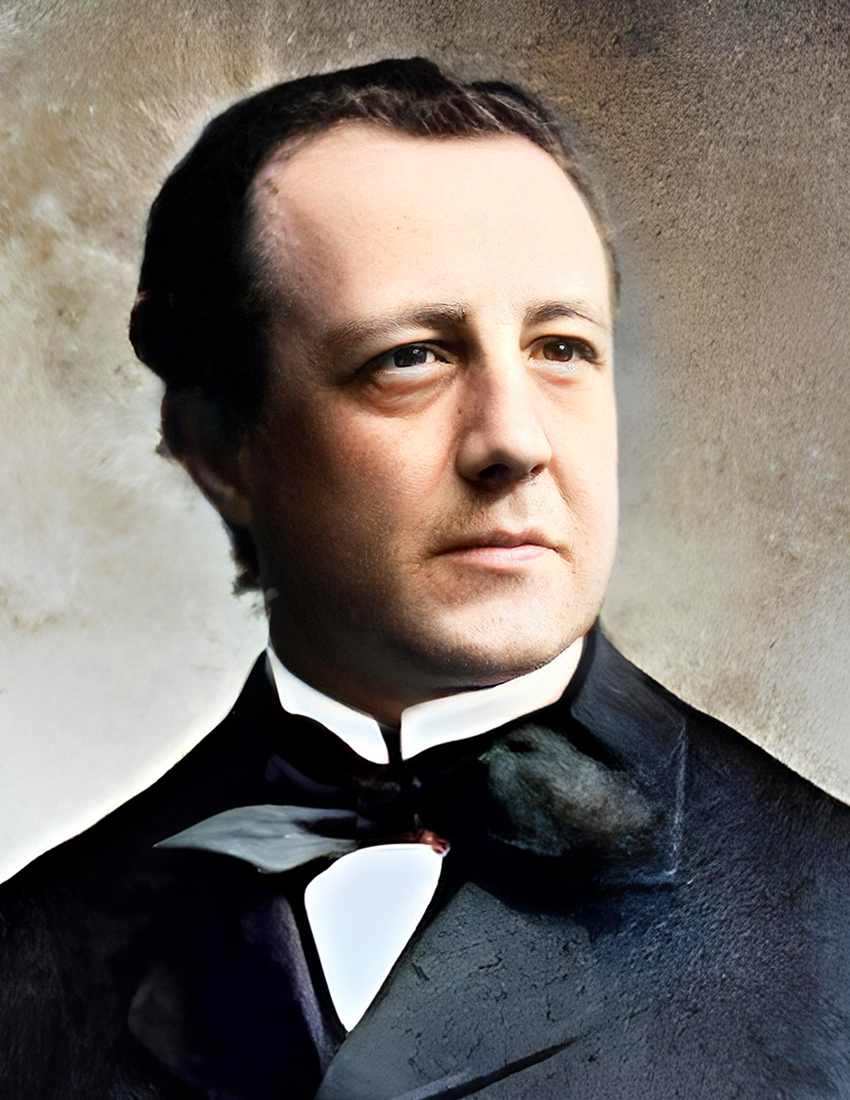Born: October 7, 1834, Warren, MA.
Died: October 18, 1918, Highwood (Findagrave) or Englewood (Wikipedia), NJ.
Buried: Bristol Center Cemetery, Canandaigua, NY.
Charles Crozat Converse

Hymns by Charles Converse
Scriven’s Portrait
A note from editor Don Chapman:
Charles Converse’s portrait is often erroneously cited as belonging to Joseph Scriven. Read more.
Charles Crozat Converse: A Life of Law and Melody
Charles Crozat Converse, born on October 7, 1832, in Warren, Massachusetts, was a man of many talents, whose life was marked by a deep passion for both law and music. From a young age, Converse demonstrated a keen intellect and a natural inclination towards the arts, which would shape the course of his remarkable career.
Early Life and Education
Converse’s early education took place at the academy in Elmira, New York, where he laid the foundation for his future endeavors. In 1855, driven by his love for music, Converse ventured to Germany to study under the tutelage of renowned musicians such as Plaidy, Richter, and Hauptman. During his time abroad, he forged friendships with luminaries like Franz Liszt and Louis Spohr, further cementing his dedication to the craft.
A Dual Path: Law and Music
Upon his return to the United States, Converse embarked on a dual path, pursuing both his legal and musical aspirations with equal fervor. In 1861, he earned his law degree from Albany University, setting the stage for a successful career as an attorney in Erie, Pennsylvania. His exceptional achievements in the field of law were later recognized by Rutherford College, which bestowed upon him an honorary LLD in 1895.
Despite his thriving legal practice, Converse never lost sight of his musical passions. He continued to compose and publish a wide array of musical works, ranging from hymn tunes to cantatas and symphonies. His compositions often appeared under various anagrammatic pen names, such as “C. O. Nevers,” “Karl Reden,” “E. C. Revons,” and “Lesta Vesé,” showcasing his creative versatility.
A Lasting Legacy in Sacred Music
Converse’s most enduring contribution to the world of sacred music came in the form of his collaboration with lyricist Joseph Scriven. By setting Scriven’s words to music, Converse created the beloved hymn “What a Friend We Have in Jesus,” which has stood the test of time and continues to inspire and comfort countless believers around the globe.
Carlton Young, a renowned authority on congregational song, suggests that Converse’s tune, aptly named CONVERSE, bears a resemblance to the popular Stephen Foster tunes of the era. The melodic contour of CONVERSE, Young notes, follows a similar path to Foster’s “Jeanie with the light brown hair,” providing a perfect musical vehicle for Scriven’s prayerful text.
A Multifaceted Musical Legacy
Beyond his most famous hymn tune, Converse’s musical legacy is both vast and varied. He composed pieces for notable figures in the world of sacred music, such as Ira Sankey and William Bradbury, and published numerous collections, including “New Method for the Guitar,” “Musical Bouquet,” and “The 126th Psalm.” His cantata based on Psalm 126 was so well-received that he was offered a Doctor of Music degree, which he humbly declined.
In 1875, Converse’s expertise in music led him to be appointed as the head of the Burdett Organ Company, further solidifying his reputation as a leading figure in the musical world.
A Life Remembered
Charles Crozat Converse’s life was a testament to the power of pursuing one’s passions and using one’s talents to enrich the lives of others. Through his legal work, musical compositions, and lasting contributions to sacred music, Converse left an indelible mark on the world. His legacy continues to inspire and uplift, reminding us of the enduring impact one person can have when they dedicate their life to the pursuit of excellence and the service of others.

